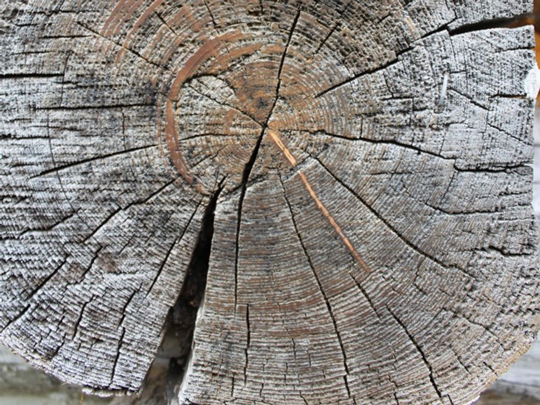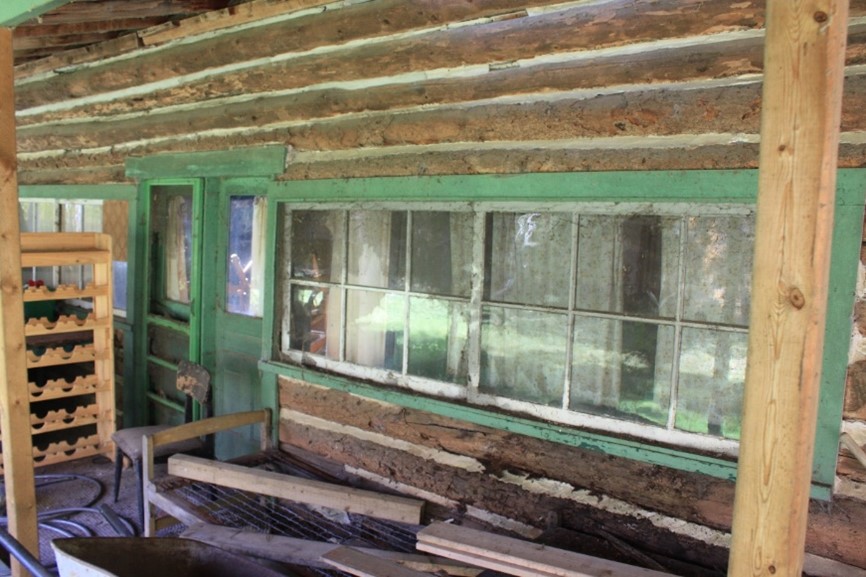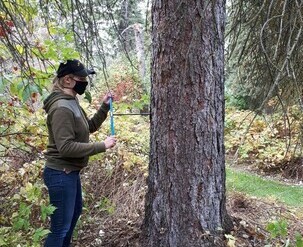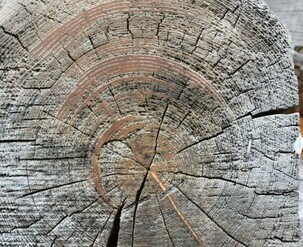Tree Rings and the Stories They Tell

Researchers from the University of Alberta, Augustana Campus are utilizing natural – in the form of tree rings – to fill in research gaps in historic water levels within the Beaver Hills Biosphere. Learn more about this effort which can contribute to a better understanding of long-term climate changes in the region.
The beautiful Beaver Hills Biosphere is not immune to the effects of a changing climate and over the last 140 years Cooking Lake has experienced significant water level changes. Current lake levels are estimated to be nine feet lower than the historic record high level of 18971.
However, water levels in Cooking Lake were not consistently measured until 1956 and a more precise measurement of the rise and fall in levels has not been established. Stories from local histories and old newspapers, old photographs and estimates of occasional years made by previous researchers, are the only sources of information on lake levels prior to 1972 when regular measurement began.
“Water is a key characteristic of the Beaver Hills Biosphere and despite this integral connection, our knowledge of historic water levels is quite limited,” explains Greg King, Assistant Professor of Environmental Science at the University of Alberta - Augustana Campus.
Greg has a background in physical geography and climate science, with a focus on using dendrochronology (the science of tree rings) as an archive of environmental information, and he has established the Augustana Tree Ring Lab for this purpose. Greg and local researcher Michael Boyd, who has spent the last eight years, since his retirement from the Alberta government, delving into the local history of the Cooking Lake area and volunteering with the Strathcona County Museum and Archives, are leading this research within the biosphere.
Aiming to fill in the blanks and utilize natural archives to extend this record and examine climate changes, Greg and Michael are analyzing tree growth rings from old white spruce within the biosphere and aiming to extend that record by also using logs from the cabins of some of the initial European settlers. This research could provide an alternative measure of the relative changes of water levels for years when water level measurements are not available. Tree ring widths have the potential to relate to regional precipitation and water level changes in Cooking Lake helping develop a timeline of change that extends from today to the mid to early 1800’s.
“In this way, our work will contribute to a better understanding of long-term climate changes in this area,” says Michael.
The area around Cooking Lake experienced a succession of fires from 1895 to 1930 which destroyed most of the older trees in the area. However, based on their research and with the help of landowners, Greg and Michael have located several surviving stands that are over 125 years old.
“These trees are remarkably rare and represent important natural archives of environmental data. We are gradually creating an important inventory of these sites as they are identified,” shares Greg.
Recent research has revealed that older trees store more carbon as they age, so protecting these areas could be important for the biosphere. The strong cultural and human histories of the biosphere, coupled with the fact that this is the first time dendrochronology has been utilized in the Beaver Hills Biosphere, make this study unique.
“Beyond the natural systems, the biosphere also has a rich local history, including records from early European settlers, that can potentially inform some of our work,” Michael adds.
Michael and Greg go on to share that biosphere offers them opportunities to share data and collaborate with other researchers with the potential to apply the research in other places within the biosphere. The study which began in fall 2020 is on-going and is expected to continue through 2021 and residents of the biosphere have an opportunity to help.
“We would very much like to hear from interested landowners that have either old spruce or old log cabins on their land in the Cooking Lake area as we plan for sampling this spring and summer. We are also interested in obtaining copies of photos taken prior to 1972 which show lake levels in Cooking Lake,” says Michael.
Please connect directly with Michael Boyd or Greg King to if you have any information you would like to contribute to this study.
1 Cooking Lake Area Study. Alberta Environment. Planning Division. 1977.


